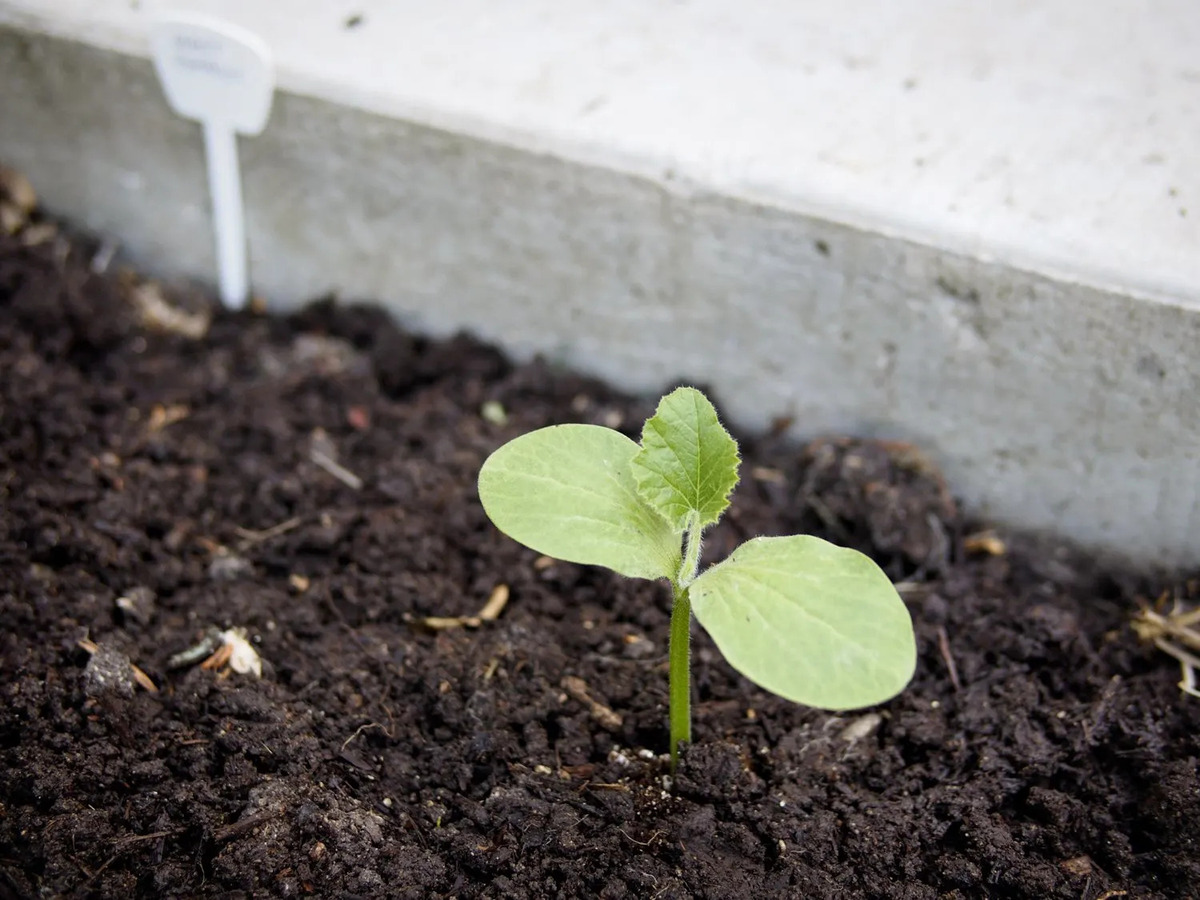Home>Gardening Techniques>When Should I Put Fertilizer On My Lawn


Gardening Techniques
When Should I Put Fertilizer On My Lawn
Modified: January 22, 2024
Learn the best time to apply fertilizer to your lawn for optimal plant care. Find out when to feed your grass and keep it healthy all year round.
(Many of the links in this article redirect to a specific reviewed product. Your purchase of these products through affiliate links helps to generate commission for Chicagolandgardening.com, at no extra cost. Learn more)
Table of Contents
Introduction
Welcome to the world of plant care and gardening! One of the key elements in maintaining a healthy and lush lawn is proper fertilization. Fertilizing your lawn provides essential nutrients to the soil, promoting strong root growth, vibrant green color, and overall plant health. However, knowing when and how to apply fertilizer can be a bit overwhelming for beginners. That’s where this guide comes in handy.
Fertilizing your lawn at the right time and with the right type of fertilizer is crucial for achieving optimal results. Factors such as the climate, grass type, and soil condition play a significant role in determining the ideal fertilizer schedule. By understanding these factors and the signs of nutrient deficiency in your lawn, you can ensure that you provide the necessary nutrients to keep your lawn thriving.
In this article, we will explore the best practices for fertilizing your lawn, including the ideal time to apply fertilizer, the signs of nutrient deficiency, the types of fertilizer to use, and the proper application techniques. By following these guidelines, you can maintain a beautiful and healthy lawn that will be the envy of your neighborhood.
Factors to Consider Before Fertilizing
Before diving into the world of fertilizing your lawn, there are a few important factors to consider. These factors will help you determine the specific needs of your lawn and ensure that you’re providing the right nutrients at the right time.
1. Grass Type: Different grass types have different nutritional requirements. Whether you have cool-season grasses like Kentucky bluegrass or warm-season grasses like Bermuda grass, it’s important to understand the specific needs of your grass to provide optimal care.
2. Climate: The climate in your region plays a significant role in your lawn’s nutrient requirements. Understanding your climate zone and the seasonal variations will help you determine the ideal fertilization schedule.
3. Soil Composition: The composition of your soil affects its ability to hold and release nutrients. Conducting a soil test will provide valuable insights into your soil’s pH, nutrient levels, and organic matter content, helping you choose the right fertilizer and make any necessary soil amendments.
4. Existing Lawn Condition: Assessing the current condition of your lawn is crucial. Factors such as existing weeds, pests, or diseases may need to be addressed before fertilization. Additionally, evaluate the overall health and density of your lawn to determine the appropriate nutrient requirements.
5. Environmental Factors: Consider any environmental factors that may impact the effectiveness of fertilization. Factors such as excessive heat, heavy rainfall, or water restrictions may affect the timing and application of fertilizer.
6. Budget and Time: Lastly, consider your budget and the amount of time you can dedicate to lawn care. Fertilizing can be an ongoing process, so it’s important to plan accordingly and choose a fertilizer that suits your budget and time constraints.
By taking these factors into account, you’ll be well-equipped to make informed decisions and create a customized fertilization plan that meets the unique needs of your lawn.
Understanding the Fertilizer Schedule
Creating and following a fertilizer schedule is essential for maintaining a healthy and vibrant lawn. A well-planned schedule ensures that you provide your lawn with the necessary nutrients throughout the growing season, promoting strong root development, lush green color, and overall plant vigor. Here’s what you need to know to understand and implement an effective fertilizer schedule.
1. Frequency of Fertilization: Fertilizing your lawn should be done on a regular basis, but the frequency will vary based on your grass type and climate. Generally, cool-season grasses require fertilization in the spring and fall, whereas warm-season grasses benefit from fertilization during the active growing season in late spring and summer.
2. Type of Fertilizer: There are different types of fertilizers available, such as granular, liquid, and organic options. Each type has its advantages and specific application methods. Consider factors like nutrient content, release rate, and ease of use when choosing the right fertilizer for your lawn.
3. Slow-Release vs. Quick-Release Fertilizers: Slow-release fertilizers gradually release nutrients over an extended period, providing a consistent supply of nutrients to the plants. Quick-release fertilizers, on the other hand, provide an immediate burst of nutrients but may require more frequent applications. Depending on your lawn’s needs and your maintenance preferences, you can choose the appropriate type of fertilizer.
4. Timing: Timing is crucial when it comes to applying fertilizer. It’s best to fertilize when the grass is actively growing, avoiding extreme weather conditions like excessive heat or drought. Applying fertilizer before a rainfall or irrigation can help activate the nutrients and ensure that they penetrate the soil properly.
5. Follow Label Instructions: Always read and follow the instructions provided on the fertilizer packaging. The label will provide specific guidelines on the application rates, frequency, and any additional precautions or recommendations to ensure effective and safe usage.
6. Adjustments based on Soil Test Results: Conducting a soil test can provide valuable insights into your lawn’s nutrient needs. Based on the soil test results, you may need to make adjustments to the fertilizer schedule or choose a specific fertilizer blend to address any deficiencies or excesses in the soil.
Creating a fertilizer schedule that aligns with your lawn’s needs and the specific requirements of your grass type and climate will ensure that your lawn receives the appropriate nutrients at the right time. This proactive approach will contribute to a healthy and beautiful lawn throughout the year.
Best Time to Apply Fertilizer
The timing of fertilizer application is crucial for maximizing its effectiveness and promoting optimal growth in your lawn. Applying fertilizer at the right time ensures that your grass receives the necessary nutrients when it needs them the most. Here are some guidelines to help you determine the best time to apply fertilizer.
1. Spring Fertilization: Spring is an important time to kick-start your lawn’s growth and recovery after the dormant winter period. For cool-season grasses, applying a slow-release nitrogen fertilizer in early spring, when soil temperatures reach around 55°F (13°C), helps promote vigorous growth and green-up. Warm-season grasses benefit from fertilization in late spring, once the soil temperatures reach around 65°F (18°C) and the grass is actively growing.
2. Summer Fertilization: During the summer months, the focus should be on maintaining the health and vitality of your lawn. For cool-season grasses, it’s best to avoid heavy fertilization during hot and dry periods, as it can stress the grass. Instead, use a light application of a slow-release fertilizer to sustain the lawn’s color and health. Warm-season grasses can benefit from a balanced or slow-release fertilizer to support continued growth and strength during the active growing season.
3. Fall Fertilization: Fall is a crucial time to prepare your lawn for the winter and promote root growth and nutrient storage. For cool-season grasses, applying a fertilizer high in potassium and phosphorus in late summer or early fall helps strengthen the roots and enhance winter hardiness. Warm-season grasses can benefit from a slow-release fertilizer in early to mid-fall to support root growth and prepare the lawn for winter dormancy.
4. Winter Fertilization: In regions with mild winters, a winter fertilizer application can be beneficial for cool-season grasses. This application provides essential nutrients to support the lawn’s health during the winter months and encourage early spring green-up. However, it’s crucial to avoid fertilizing when the grass is dormant or the ground is frozen, as the nutrients may not be absorbed effectively.
5. Consider Regional Differences: Keep in mind that the best time to apply fertilizer may vary depending on your geographic location and climate. Understanding your specific region’s growing season and climate patterns will help you fine-tune the timing of fertilizer applications to achieve the best results.
By following these guidelines and adjusting the timing of fertilizer application based on your grass type and regional factors, you can ensure that your lawn receives the necessary nutrients at the most opportune times for healthy growth and vibrant color.
Signs of Nutrient Deficiency in Lawns
Recognizing the signs of nutrient deficiency in your lawn is essential for addressing any underlying issues and providing the necessary nutrients to promote healthy growth. Certain visible indicators can help you identify potential nutrient deficiencies and take appropriate action. Here are some common signs to look out for:
1. Yellowing or Fading Color: One of the most noticeable signs of nutrient deficiency is a yellowing or fading of the grass’s normal vibrant green color. Nitrogen deficiency, for example, often causes a pale or yellowish hue in the lawn.
2. Stunted Growth: Nutrient deficiencies can lead to slow or stunted growth in the grass. If you notice that your lawn is not growing as vigorously as it should, it may indicate a lack of essential nutrients, such as phosphorus or potassium.
3. Thin or Patchy Growth: Insufficient nutrients can result in thinning or patchy growth, where the grass appears sparse or uneven. If you notice areas with bare soil or weak grass coverage, it may be a sign of nutrient deficiency.
4. Unusual Leaf Appearance: Nutrient deficiencies can cause several abnormalities in leaf appearance. For instance, a phosphorus deficiency may cause dark blue-green leaves, while an iron deficiency can lead to yellowing of leaf tissue with green veins.
5. Increased Weed Growth: When your lawn lacks essential nutrients, it becomes more susceptible to weed invasion. Weeds may start taking over weakened areas, indicating a nutrient deficiency that needs to be addressed.
6. Poor Recovery from Stress: A lawn with nutrient deficiencies tends to have a lower tolerance to stressors such as heat, drought, or foot traffic, and may struggle to recover quickly. If your lawn shows slow recovery or fails to bounce back after stress, it may indicate nutrient deficiencies.
7. Specific Symptoms of Deficiency: Different nutrient deficiencies can exhibit specific symptoms. For example, a nitrogen deficiency often results in overall yellowing or pale leaves, while a potassium deficiency may cause scorch-like symptoms on leaf margins and a reddish discoloration of older leaves.
It’s important to note that these signs can also be indicative of other lawn issues, such as pests, diseases, or improper maintenance practices. Conducting a soil test and consulting with a gardening professional can help pinpoint the exact cause of the issue and develop an appropriate corrective plan.
By keeping an eye out for these signs of nutrient deficiency and taking prompt action, you can ensure that your lawn receives the nutrients it requires for healthy growth, lush appearance, and overall resilience.
Applying the Right Type of Fertilizer
Choosing the right type of fertilizer for your lawn is essential to provide the necessary nutrients and promote healthy growth. There are different types of fertilizers available, each with its own composition and formulation. Understanding these options will enable you to select the best fertilizer for your lawn’s specific needs. Here are some factors to consider when applying the right type of fertilizer:
1. Macronutrient Composition: Fertilizers are typically labeled with three numbers representing the percentage of nitrogen (N), phosphorus (P), and potassium (K) they contain. These macronutrients are vital for plant growth and serve different purposes. For example, a fertilizer labeled 10-10-10 has an equal ratio of N, P, and K. Understanding your lawn’s nutrient requirements and specific deficiencies can help guide your choice of fertilizer with the appropriate macronutrient composition.
2. Slow-Release vs. Quick-Release Fertilizers: Fertilizers can be categorized as slow-release or quick-release. Slow-release fertilizers are designed to gradually release nutrients over time, providing a consistent and steady supply to the plants. Quick-release fertilizers, on the other hand, release nutrients rapidly and provide an immediate boost. Choosing the right type depends on your lawn’s needs, the desired longevity of nutrient release, and your desired maintenance routine.
3. Organic vs. Synthetic Fertilizers: Fertilizers can be organic or synthetic. Organic fertilizers contain natural components, such as compost, manure, or plant-based materials, which release nutrients slowly and improve soil health over time. Synthetic fertilizers, also known as chemical fertilizers, are manufactured and contain specific concentrations of nutrients. The choice between organic and synthetic fertilizers depends on your personal preference, environmental considerations, and specific lawn needs.
4. Specialty Fertilizers: Some fertilizers are formulated for specific lawn needs. For instance, you may find fertilizers designed for acid-loving plants, high-nitrogen formulations for promoting vegetative growth, or fertilizers with added micronutrients to address specific nutrient deficiencies. If your lawn has unique requirements or specific issues, consider using specialty fertilizers tailored to those needs.
5. Consider Soil Test Results: Conducting a soil test can provide valuable insights into your lawn’s nutrient levels and pH balance. The test results will help you determine any deficiencies or excesses in the soil, allowing you to choose a fertilizer that addresses those specific needs. Incorporating the recommendations from a soil test can greatly enhance the effectiveness of your fertilizer application.
6. Application Method and Equipment: Consider the application method and equipment you will use to efficiently distribute the fertilizer. Granular fertilizers are typically spread using a broadcast spreader, while liquid fertilizers require a sprayer or specialized applicator. Ensure that you have the appropriate equipment for the type of fertilizer you choose to ensure effective and even distribution.
By considering the macronutrient composition, release characteristics, organic vs. synthetic options, specialty formulations, soil test results, and application method, you can select and apply the right type of fertilizer that best meets your lawn’s specific needs. This targeted approach will contribute to the overall health and vibrancy of your lawn.
How to Properly Apply Fertilizer
Properly applying fertilizer is crucial to ensure that your lawn receives the necessary nutrients for healthy growth. Here are some guidelines to follow when applying fertilizer to your lawn:
1. Read and Follow Instructions: Carefully read and follow the instructions provided on the fertilizer packaging. The instructions will provide specific guidance on the recommended application rates, timing, and any additional precautions or recommendations.
2. Choose the Right Equipment: Depending on the type of fertilizer you’re using, choose the appropriate equipment for application. For granular fertilizers, a broadcast spreader will help ensure even distribution. Liquid fertilizers may require a sprayer or specialized applicator. Make sure the equipment is calibrated correctly to apply the fertilizer at the desired rate.
3. Prepare Your Lawn: Before applying fertilizer, ensure that your lawn is prepared. Remove any debris, such as sticks or rocks, and mow the grass to the appropriate height. It’s best to fertilize on a dry day when the grass blades are not wet to prevent the fertilizer from sticking to the foliage.
4. Measure and Apply: Use a measuring cup or scale to accurately measure the fertilizer according to the recommended application rate. Start by applying the fertilizer along the perimeter of your lawn to create a border. Then, walk in a back-and-forth pattern, overlapping slightly with each pass to ensure even coverage. Avoid applying too much fertilizer in one spot as it can burn the grass.
5. Water-In the Fertilizer: After applying the fertilizer, lightly water your lawn to help activate and distribute the nutrients into the soil. Watering also helps to prevent potential burning of the grass blades. Avoid excessive watering, as it may cause the fertilizer to wash away or leach deeper into the soil.
6. Clean-Up: After applying the fertilizer, clean any spills or fertilizer that landed on non-target areas like sidewalks or driveways. These areas should be swept or rinsed off to prevent runoff into water sources.
7. Follow Environmental Regulations: It’s important to follow any local or regional regulations regarding fertilizer application. Some areas may have restrictions on certain types of fertilizers or specific application practices to protect local ecosystems.
8. Maintain a Fertilization Schedule: To ensure consistent nutrient supply, follow a fertilization schedule based on your grass type and regional recommendations. Regularly monitoring your lawn’s nutrient status and adjusting the fertilization schedule as necessary can help maintain a healthy and vibrant lawn.
By following these steps to properly apply fertilizer, you can ensure that your lawn receives the necessary nutrients for healthy growth and vibrant color. Remember, responsible fertilizer application not only promotes the health of your lawn but also helps protect the environment.
Avoiding Common Mistakes When Fertilizing
Fertilizing your lawn is an important part of plant care, but it’s essential to avoid common mistakes that can hinder the effectiveness of the fertilizer and potentially harm your lawn. By being aware of these mistakes and taking proactive measures, you can ensure successful fertilization and maintain a healthy, thriving lawn. Here are some common mistakes to avoid:
1. Overapplication: Applying too much fertilizer can burn the grass and cause damage. Follow the recommended application rates provided on the fertilizer packaging and use a measuring device to ensure accurate and even distribution.
2. Uneven Application: Unevenly applying fertilizer can result in uneven growth and color in your lawn. Use a spreader or sprayer to apply the fertilizer in a consistent and uniform manner. Take care to overlap slightly with each pass to avoid missed areas.
3. Ignoring Soil Test Results: Soil testing provides valuable information about your lawn’s nutrient levels. Ignoring the results and not adjusting your fertilization practices accordingly can result in over-fertilization or nutrient deficiencies. Follow the recommendations from the soil test to ensure targeted and effective fertilization.
4. Fertilizing at the Wrong Time: Applying fertilizer at the wrong time can lead to nutrient wastage or stress on the grass. Follow the recommended timing for fertilization based on your grass type and regional guidelines to ensure optimal nutrient uptake and minimize the risk of nutrient loss.
5. Fertilizing on Wet Grass: Fertilizing on wet grass can lead to clumping and uneven distribution of the fertilizer. Wait for the grass blades to dry before applying fertilizer to ensure that it adheres properly to the soil surface.
6. Fertilizing during Drought: Fertilizing during periods of drought can stress the grass and even contribute to burnout. It’s best to avoid fertilizing when the lawn is already under stress due to lack of water. Instead, focus on providing adequate irrigation and wait until the grass has recovered before applying fertilizer.
7. Neglecting Environmental Considerations: It’s important to consider the environmental impact of fertilizer application. Avoid applying fertilizer near water bodies, as excess nutrients can pollute the water and harm aquatic life. Be mindful of any local regulations or guidelines regarding fertilizer application to protect the environment.
8. Using Expired or Damaged Fertilizer: Using expired or damaged fertilizer can result in reduced effectiveness or potential harm to your lawn. Check the expiration date on the packaging before use and store fertilizer in a cool, dry place to maintain its quality.
9. Skipping Fertilization: Neglecting regular fertilization can result in nutrient deficiencies and poor lawn health. Follow a fertilization schedule based on your grass type and regional recommendations to ensure that your lawn receives the necessary nutrients consistently.
By avoiding these common mistakes and adopting proper fertilization techniques, you can help your lawn thrive and maintain its health and beauty throughout the year. Taking the time to fertilize correctly will pay off in the long run, resulting in a lush, vibrant, and resilient lawn.
Conclusion
Fertilizing your lawn is a critical aspect of plant care and plays a vital role in promoting healthy growth and maintaining a lush, vibrant lawn. By understanding the factors to consider before fertilizing, the importance of a fertilizer schedule, the best time to apply fertilizer, and how to choose and apply the right type of fertilizer, you can ensure that your lawn receives the essential nutrients it needs to thrive.
Before fertilizing, take into account factors such as grass type, climate, soil composition, and the overall condition of your lawn. These factors will help you develop a customized fertilization plan that caters to the unique needs of your lawn. Conducting a soil test can provide valuable insights into any nutrient deficiencies or excesses, allowing you to select the appropriate fertilizer and make any necessary soil amendments.
Timing is crucial when it comes to applying fertilizer. Adhering to a fertilization schedule based on the growth patterns of your grass type and the specific requirements of your region will promote optimal nutrient uptake and minimize waste. Additionally, proper application techniques, such as using the right equipment, measuring accurately, and evenly distributing the fertilizer, ensure that your lawn receives the nutrients it needs in a uniform manner.
While fertilizing your lawn, it’s important to be mindful of common mistakes, such as overapplication, uneven distribution, ignoring soil test results, fertilizing at the wrong time, and neglecting environmental considerations. Avoiding these mistakes and following recommended practices will help you achieve the best results and protect the environment.
With a proactive approach to fertilization, you can enjoy a healthy, vibrant lawn that becomes the envy of your neighborhood. Regular fertilization, combined with proper watering, mowing, and overall lawn care practices, will contribute to the long-term health and beauty of your lawn. So roll up your sleeves, grab your fertilizer, and get ready to nurture a thriving, picture-perfect lawn!









